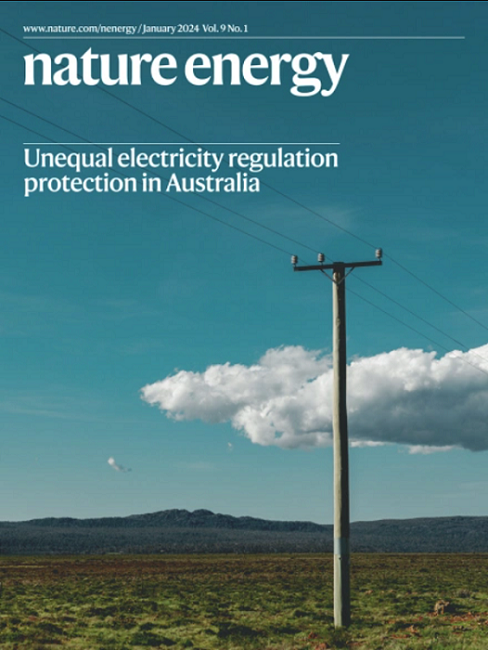Carrier management through electrode and electron-selective layer engineering for 10.70% efficiency antimony selenosulfide solar cells
IF 60.1
1区 材料科学
Q1 ENERGY & FUELS
引用次数: 0
Abstract
Antimony selenosulfide (Sb2(S,Se)3) solar cells suffer from charge carrier loss, which has limited the power conversion efficiency to around 10%. Here we develop a charge carrier management strategy using a textured fluorine-doped tin oxide substrate as the front contact to enhance light scattering and maximize charge generation. To overcome voids and shunt paths introduced by the textured surface, we insert a SnO2 layer by atomic layer deposition at the textured fluorine-doped tin oxide/CdS interface. This results in a conformal deposition of CdS and an optimal bandgap profile in the Sb2(S,Se)3 absorber, which improves charge transport and lowers charge recombination at the interface and in the bulk, respectively. We achieve a certified efficiency of 10.70% sodium selenosulfate-based Sb2(S,Se)3 solar cells with excellent stability. We prove the generality of the method demonstrating selenourea-based Sb2(S,Se)3 and upscaling the solar cells to 1 cm2. The results represent a step forward in the development of antimony-based solar cells. Dong et al. achieve Sb2(S,Se)3 solar cells with 10.7% efficiency by increasing charge generation with a textured electrode and reducing charge recombination and transport loss with a conformal electron-selective layer.


10.70%效率硒化锑太阳能电池的电极和电子选择层工程载流子管理
硒化锑(Sb2(S,Se)3)太阳能电池存在载流子损耗,这将其功率转换效率限制在10%左右。在这里,我们开发了一种电荷载流子管理策略,使用有纹理的氟掺杂氧化锡衬底作为前接触,以增强光散射并最大化电荷产生。为了克服由织构表面引入的空洞和分流路径,我们通过原子层沉积在织构的氟掺杂氧化锡/CdS界面上插入SnO2层。这导致CdS的保形沉积和Sb2(S,Se)3吸收体中的最佳带隙分布,分别改善了界面和体中的电荷输运和降低了电荷复合。我们获得了经认证的效率为10.70%的硒硫酸钠基Sb2(S,Se)3太阳能电池,具有优异的稳定性。我们证明了该方法的普遍性,展示了硒脲基Sb2(S,Se)3,并将太阳能电池放大到1 cm2。这一结果代表了锑基太阳能电池的发展又向前迈进了一步。
本文章由计算机程序翻译,如有差异,请以英文原文为准。
求助全文
约1分钟内获得全文
求助全文
来源期刊

Nature Energy
Energy-Energy Engineering and Power Technology
CiteScore
75.10
自引率
1.10%
发文量
193
期刊介绍:
Nature Energy is a monthly, online-only journal committed to showcasing the most impactful research on energy, covering everything from its generation and distribution to the societal implications of energy technologies and policies.
With a focus on exploring all facets of the ongoing energy discourse, Nature Energy delves into topics such as energy generation, storage, distribution, management, and the societal impacts of energy technologies and policies. Emphasizing studies that push the boundaries of knowledge and contribute to the development of next-generation solutions, the journal serves as a platform for the exchange of ideas among stakeholders at the forefront of the energy sector.
Maintaining the hallmark standards of the Nature brand, Nature Energy boasts a dedicated team of professional editors, a rigorous peer-review process, meticulous copy-editing and production, rapid publication times, and editorial independence.
In addition to original research articles, Nature Energy also publishes a range of content types, including Comments, Perspectives, Reviews, News & Views, Features, and Correspondence, covering a diverse array of disciplines relevant to the field of energy.
 求助内容:
求助内容: 应助结果提醒方式:
应助结果提醒方式:


